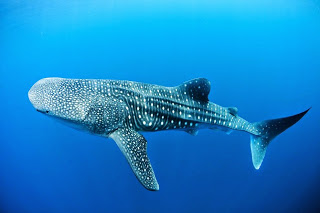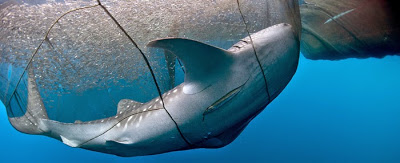WHALE SHARK
Diet: Carnivore
Size: 5.5 to 10 m.
Weight: Approx. 20.6 ton
Group name: School
Status: Endangered
N scientist: Rhincodon typus
Globally, whale sharks occur in waters of more than 100 countries and have a wide distribution usually between latitudes 30 ° N and 35 ° S in tropical and temperate seas, both in oceanic and coastal waters. They congregate in feeding areas, often making long migrations to reach areas rich in food.
The main points for the sighting of these sharks are Mexico, Belize, Japan, Thailand, Malaysia, the Philippines, Australia, the Galapagos Islands, Honduras, South Africa, Mozambique, Seychelles and India.
Because whale sharks live long lives (estimates say more than 70 years), mature late, do not produce offspring until they are more than 30 years old, and give birth to relatively few offspring during their lifetime, they are especially threatened by human exploitation.
Threats to the whale shark include loss of habitat that results in the loss of prey species, coastal development resulting in marine pollution, collision with vessels, and disturbance or harassment by vessels and divers participating in the irresponsible tourist activities. The biggest threat however, is the trade in whale shark parts, including their fins that are used in traditional Chinese medicine.
On the other hand, by discovering the great economic income that tourism can offer to swim and observe these enormous beings up close, it has placed them at an important point of conservation.

If you want to know them and live this experience; contact us!
The post Interesting data about the whale shark appeared first on Phantom Divers.








